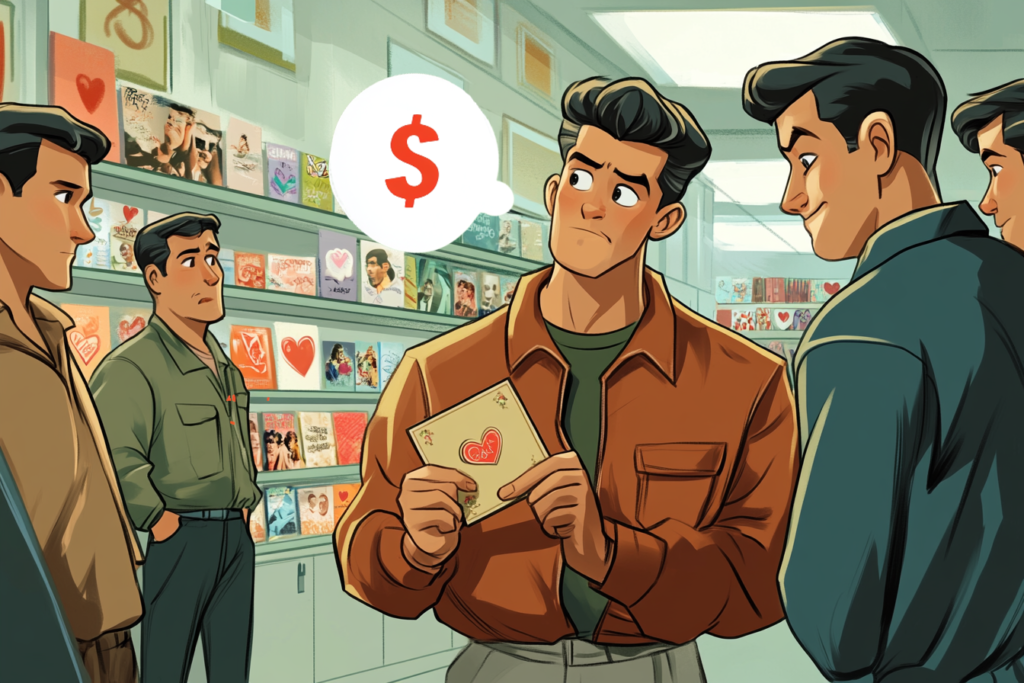
Standing in the card aisle yesterday, I watched last-minute shoppers face that familiar moment of sticker shock.
Looking at card after card, finding one that seems ok. Flipping it over.
What the… ?
$8.99 for a piece of folded cardstock, replete with one-size-fits-all clichés about love?
That’s about the price of a paperback novel — you know, those things with 300 pages, complex printing, binding, and months (if not years) of creative and editing work.
What’s really something: The fancy Valentine’s cards with pop-ups, little pseudo-gems and embossing often cost the same as the simpler ones.
It’s like there’s an unspoken agreement: “A card costs what a card costs.”
Who are you to question it right now?
Then there’s my wife’s favorite hack at Costco: A box of 40 genuinely impressive cards — we’re talking rhinestones, multi-layered cutouts, felt details — with matching self-sealing envelopes and a quality storage box.
All for $25.
That’s 63 cents per card versus $8.99.
This price disparity reveals something wild about how products in general are positioned and priced.
The value is not always related to the cost to produce, distribute and sell what you’re buying.
It really IS what the customer is willing to pay in the expected situation.
Commodity products like most grocery items have teeny, tiny margins. Greeting cards (even in the same grocery stores), great big ones.
Traditional greeting card companies aren’t selling you the commodity of paper plus printer’s ink.
They’re offering up something premium: last-minute redemption.
People have voted with their wallets that said redemption is worth nine bucks.
In all reality, your partner would probably prefer a card you made with scissors, crayons and your very own words.
And you could have been proactive and grabbed that Costco crate o’ cards for all occasions.
But you didn’t.
And think about it: Hallmark and American Greetings didn’t simply capitalize on Valentine’s Day for its sentimental value.
They went next level and turned the occasion into a card-giving obligation.
They understood that when things we all treasure (like love) collide with universal human failings like procrastination, price sensitivity disappears. (We talked about that phenomenon in the weeks leading up to Christmas.)
The tank brain knows: You CAN’T show up empty-handed on February 14th.
Or else the dog brain knows where it’s sleeping.
Turns out, nine bucks is a pretty good deal.
Action for today: Now look at YOUR product category. Where are customers paying premium prices mainly because of social obligation, time pressure or other circumstances? That’s either an opportunity or a vulnerability.
Laurier
Product Payoff: Ready for some sweet irony? When See’s Candies introduced their pre-packaged Valentine’s boxes, luxury chocolate makers guffawed at the idea of standardizing romance. But See’s took something else to heart: Most people wanted to avoid both premium pricing and the anxiety of trying to pick individual chocolates. By making love more accessible and less stressful, they built an empire worth billions — and those fancy chocolate shops happily jack up their prices every February.
